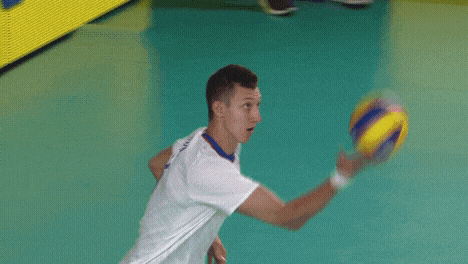Mastering the Jump Serve in Volleyball: Drills and Techniques

Among the various skills crucial for success, the jump serve stands out as one of the most powerful and intimidating weapons in a player’s arsenal. Mastering the jump serve not only adds firepower to your team’s offense but also puts immense pressure on the opposing side.
However, executing a proficient jump serve requires more than just raw power. It demands precision, timing and proper technique. In this comprehensive guide, we delve into drills and techniques designed to help you improve your jump serving skills, transforming you into a formidable force on the volleyball court.
Understanding the Jump Serve
Before delving into drills, let’s briefly revisit the mechanics of a jump serve. Unlike a standing serve, which is executed with both feet firmly planted on the ground, the jump serve involves a dynamic approach. Here’s a step by step breakdown:
Now that we’ve outlined the fundamentals, let’s explore drills aimed at refining each aspect of the jump serve.
Drills for Improving Jump Serve Technique
Approach and Timing Drill
Objective: Develop proper footwork and timing for an effective jump serve.
| Drill Setup | Instructions |
|---|---|
| Mark a starting point behind the service line. | Begin by practicing your approach without the ball. Focus on the timing of your steps, ensuring a fluid motion. Gradually increase the speed of your approach. |
Ball Toss Drill
Objective: Improve consistency in ball placement and contact.
| Drill Setup | Instructions |
|---|---|
| Stand behind the service line with a supply of volleyballs. | Practice tossing the ball to yourself with one hand, simulating a game like scenario. Aim for consistent height and placement to replicate match conditions. Focus on timing your toss to coincide with your approach. |
Target Accuracy Drill
Objective: Enhance precision by aiming for specific targets on the court.
| Drill Setup | Instructions |
|---|---|
| Set up targets on the opposing court, such as zones or specific areas. | Execute jump serves, aiming to land the ball within the designated targets. Start with larger targets and gradually decrease their size to increase difficulty. This drill not only improves accuracy but also helps develop the ability to strategically place serves during a game. |
Power Development Drill
Objective: Increase serving power while maintaining control and accuracy.
| Drill Setup | Instructions |
|---|---|
| Utilize a radar gun or measuring device to track serving speed. | Focus on generating maximum power with your jump serve while still maintaining proper technique. Experiment with different arm swing variations and follow through techniques to optimize power output. This drill helps players understand how to generate power efficiently while maintaining consistency and control. |
Game Situational Drill
Objective: Simulate game-like scenarios to enhance situational awareness and decision making.
| Drill Setup | Instructions |
|---|---|
| Divide players into teams and simulate game situations, such as serving to win a set or serving under pressure. | Emphasize strategic serving placement based on the opponent’s weaknesses and defensive formations. Rotate players through various positions to develop versatility and adaptability. This drill not only improves serving skills but also enhances overall game intelligence and decision making abilities. |
Incorporating Data and Progress Tracking
To further enhance your training regimen, consider incorporating data tracking and progress monitoring. Keep a record of serving statistics, including serving speed, accuracy and effectiveness. Utilize this data to identify areas for improvement and track progress over time. Additionally, video analysis can provide valuable insights into technique and mechanics, allowing players to identify strengths and weaknesses more effectively.
Conclusion
Mastering the jump serve in volleyball requires dedication, practice and attention to detail. By incorporating these drills into your training regimen and utilizing data tracking and progress monitoring techniques, you can enhance your serving technique, consistency, and effectiveness on the court.
Remember to focus on proper mechanics, timing and strategic decision making to unleash the full potential of your jump serve. With patience, perseverance and a commitment to continuous improvement, you’ll soon be delivering powerful serves that leave your opponents scrambling to keep up. So, grab your volleyball, hit the court and start perfecting your jump serve today.
With a deeper understanding of the mechanics behind the jump serve and a structured approach to training through these drills, players can elevate their performance and make significant strides towards becoming more impactful contributors to their teams.
Whether you’re a beginner looking to develop foundational skills or an experienced player aiming to refine your technique, these drills offer a pathway to mastery. So lace up your shoes, grab your volleyball and get ready to take your jump serve to new heights.


